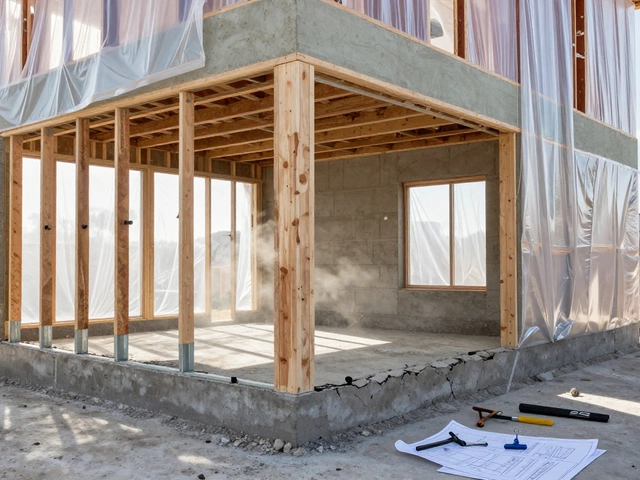New Roof Tips: Practical Advice for a Smooth Roof Replacement
When working with new roof tips, a collection of practical advice for homeowners planning a roof replacement, from budgeting to choosing materials and ensuring proper installation. Also known as roof replacement advice, it helps you avoid costly mistakes and achieve a lasting roof, you’re essentially setting the stage for a project that impacts your home’s value, energy bills, and comfort. new roof tips are not just a checklist; they’re a roadmap that connects decisions about cost, materials, and workmanship.
Budgeting Smartly
One of the first things anyone tackles is the roof replacement cost, the total amount you’ll spend on a new roof, including labor, materials, permits and disposal. Understanding this number lets you balance quality and price. For example, a $30,000 estimate might sound high, but when you break it down—$15,000 for high‑grade shingles, $8,000 for skilled labor, $4,000 for disposal and permits, $3,000 for unexpected fixes—you see where value resides. New roof tips encompass cost forecasting, allowing homeowners to compare bids, request itemized quotes, and plan for contingencies, which ultimately prevents budget overruns.
Another key point is financing. Many providers offer phased payments or low‑interest loans, and a solid budget plan can improve your eligibility. By mapping out expenses early, you can time purchases to sale periods, like buying shingles during off‑season discounts, which squeezes more mileage out of every pound.
Finally, remember to factor in long‑term savings. A well‑insulated roof can cut heating bills by up to 15%, so spending a bit more on quality materials pays dividends over the roof’s lifespan.
When you’ve nailed the budgeting part, the next step is picking the right material, and that’s where knowledge of roofing materials becomes crucial.
Choosing the appropriate roofing materials, the specific types of shingles, tiles, metal or slate used to cover a roof, each with distinct durability, weight, and aesthetic qualities directly influences both cost and performance. Asphalt shingles are popular for their affordability and ease of installation, while metal panels offer superior longevity and reflectivity, which can lower cooling costs. Slate and tile, though pricier, bring a timeless look and can last a century with proper care. New roof tips cover material selection, linking durability, climate suitability, and visual appeal so you can match your home’s style and regional weather patterns.
Don’t forget about warranties. A material with a 30‑year warranty signals confidence from the manufacturer and reduces future repair expenses. Pairing a durable material with a reputable installer creates a synergy that extends the roof’s service life.
Now that you’ve settled on cost and material, the actual installation phase becomes the linchpin of the project’s success.
The roof installation, the process of removing old roofing, preparing the deck, laying underlayment, and securing new roofing materials demands skilled labor and strict adherence to building codes. New roof tips require you to verify that the contractor holds the proper licenses, insurance, and a track record of clean work sites. Proper installation ensures the underlayment is laid without gaps, flashing is sealed around chimneys and vents, and ventilation is balanced to avoid moisture buildup.
In many regions, permits are mandatory, and inspections follow key milestones. Ignoring these steps can lead to fines or future structural issues. A well‑executed installation not only protects against leaks but also enhances energy efficiency by allowing the insulation to perform as intended.
Beyond the installation day, ongoing maintenance keeps the roof in top shape for decades.
Regular roof maintenance, routine inspections, cleaning, and repairs performed to preserve roof integrity and extend its lifespan includes clearing debris, checking for damaged shingles after storms, and ensuring gutters remain clear. New roof tips advise a bi‑annual inspection—once after winter and once after summer—to catch wear early. Small fixes, like resealing a cracked flash, prevent water infiltration that could damage the deck or interior walls.
Maintenance also ties into energy savings. A clean, intact roof reflects sunlight better, reducing heat transfer into the house, which lowers air‑conditioning loads. Pairing maintenance with a smart choice of reflective materials amplifies these benefits.
By now you’ve seen how budgeting, material choice, installation standards, and maintenance weave together to form a holistic roof replacement strategy. Each element influences the others—like how material weight affects structural support requirements, or how proper installation maximizes the warranty offered by manufacturers.
Below you’ll find a curated set of articles that dive deeper into each of these areas, from cost breakdowns to material comparisons and step‑by‑step installation guides. Explore the posts to turn these tips into a seamless, confident roof replacement experience.
How to Negotiate the Price of a New Roof
Negotiating the price of a new roof can feel daunting, but with the right approach, you can save money and get the best value. This article dives into effective strategies for negotiating with roofing contractors, including understanding market prices, preparing for discussions, and using negotiation tactics. It also covers common pitfalls to avoid and why roof quotes can vary significantly. Get ready to navigate your roofing project with confidence.
full article




